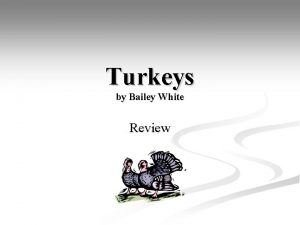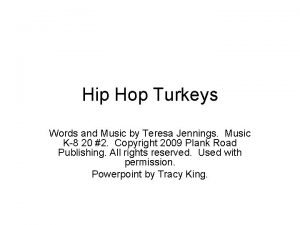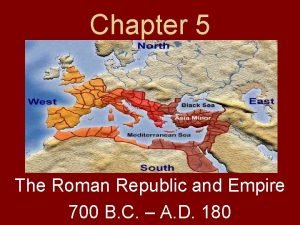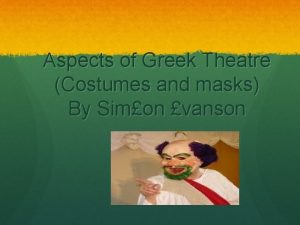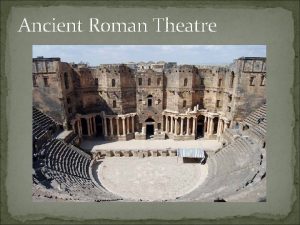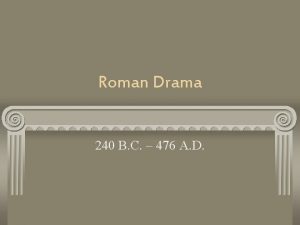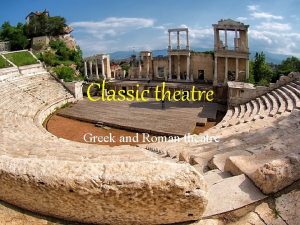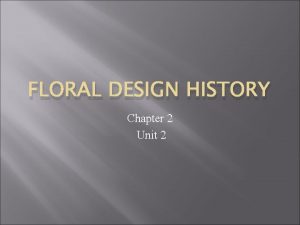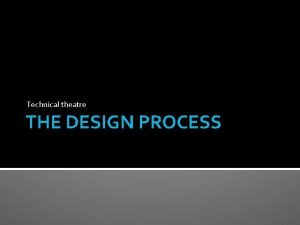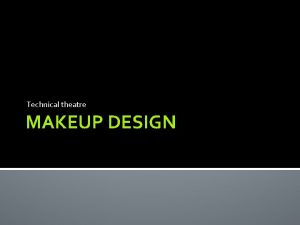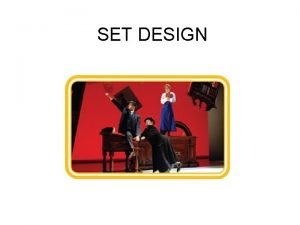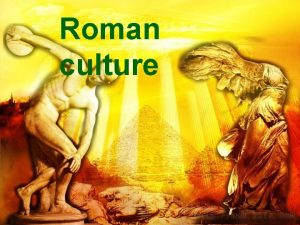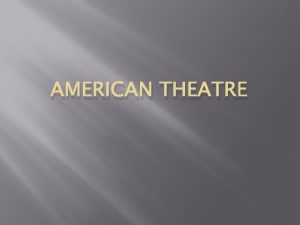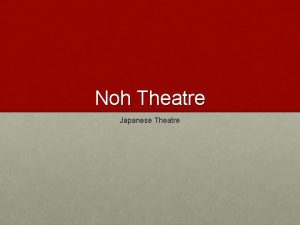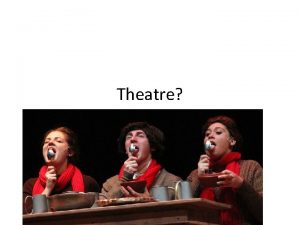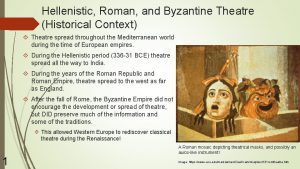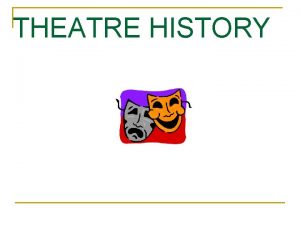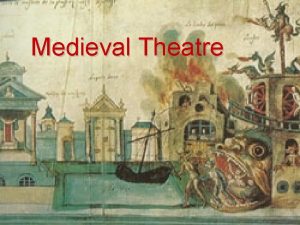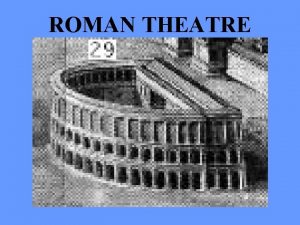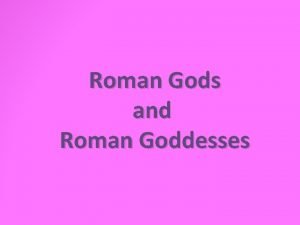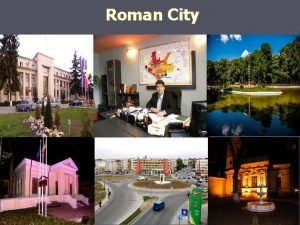Roman Theatre Design Theatre in Aspendos on Turkeys


























- Slides: 26

Roman Theatre Design Theatre in Aspendos on Turkey's south coast, the best preserved Roman theatre in the world

Comedy and Tragedy • Included more than dramatic plays : • • acrobatics gladiators jugglers athletics chariots races naumachia (sea battles) Boxing animal fights


Roman Theatre Design • First permanent Roman theatre built 54 A. D. (100 years after the last surviving comedy)

Roman Theatre Design General Characteristics • Cavea could seat up to 25, 000 • Larger then Greek Theatres • dressing rooms in side wings, Aditus Maximus Scaena =skene

Roman Theatre Design General Characteristics • Stage raised to five feet • Stages were large – 20 -40 ft deep 100 -300 ft long

Roman Theatre




Roman Theatre Design General Characteristics • trap doors • cooling system – air blowing over streams of water • awning over the audience to protect them from the sun

Roman Theatre Design Scaena • “stage house” • joined with audience to form one architectural unit

Roman Theatre Design Scaena frons • front/façade of the stage house • was painted and had columns, niches, porticoes, statues

Theatre at Orange, France

Roman Theatre Design Orchestra • becomes half-circle • was probably used for gladiators and for the display and killing of wild animals • if entertainment permitted, people were sat here

Roman Theatre Design Vomitoria • corridors under the seats that lead onto the orchestra

Roman Theatre Design Pulpitum • the stage Cavea • the auditorium

Roman Theatre Design Other structures included: Circus Maximus Ampitheatres

Roman Theatre Design Circus Maximus • Primarily for Chariot racing • Permitted 12 chariots to race at once

Roman Theatre Design Ampitheatres • For gladiator contests, wild animal fights, and occasionally naumachia • Had space with elevators below to bvring up animals, etc.

Actors and Companies • Festival under control of local official who hired acting troupes • Troupes led by dominus • Dominus bought plays, hired actors • Actors = historiones, • Mostly male – women were in mimes

Roman Actors • some believe actor were slaves. • “Star" performers however could achieve great fame and wealth

Roman Actors Style of Acting • Mostly Greek traditions – masks, doubling of roles • Six male actor, no 3 actor rule

Roman Actors Style of Acting • Movements likely enlarged, large parts of the play may have been sung • Actors probably specialized in one type of drama and role

Dramatic Criticism in Rome • Like Roman drama, Roman dramatic criticism was based on the work of others, especially Aristotle • The best-known writer of dramatic theory and criticism in the Roman world was Horace (Quintus Horatius Flaccus) Horace © 2012, The Mc. Graw-Hill Companies, Inc. All Rights 1 -25 (Culver Pictures)

Horace • Chorus – set high moral tone • 5 acts, 3 speaking actors • No gods unless necessary • Drama – profit and please- entertain and instruct.
 Why do turkeys puff up
Why do turkeys puff up 780 turkeys live in merriam township
780 turkeys live in merriam township Baileys turkeys
Baileys turkeys Availa zn chickens
Availa zn chickens Hip hop turkey
Hip hop turkey A food handler thaws several frozen turkeys on a prep table
A food handler thaws several frozen turkeys on a prep table Histriones roman theatre
Histriones roman theatre Roman republic vs roman empire
Roman republic vs roman empire Roman republic vs roman empire
Roman republic vs roman empire Souffragettes
Souffragettes Costumes in greek theatre
Costumes in greek theatre Ancient rome theatre
Ancient rome theatre Rome 240 bc
Rome 240 bc Difference between roman and greek theatre
Difference between roman and greek theatre Byzantine floral history
Byzantine floral history Art nouveau period floral design
Art nouveau period floral design American federal floral design history
American federal floral design history Music performance study design
Music performance study design 7 steps of design process theatre
7 steps of design process theatre Theatre makeup design
Theatre makeup design Proscenium diagram
Proscenium diagram Vcaa visual communication design
Vcaa visual communication design Principles of computer input and output design
Principles of computer input and output design Decorative design definition
Decorative design definition Types of decorative design
Types of decorative design Within subject design vs between subject design
Within subject design vs between subject design Process design and control design should always be in
Process design and control design should always be in


